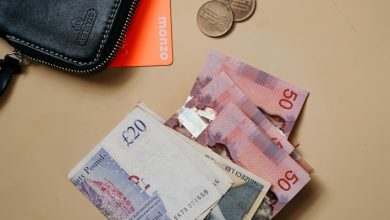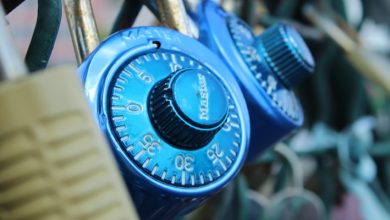How to Secure Your Wallet Against Malware Attacks

- Understanding the Risks of Malware Attacks on Your Wallet
- Tips for Identifying and Avoiding Malicious Software
- Securing Your Digital Wallet: Best Practices to Keep Your Funds Safe
- Common Tactics Used by Hackers to Target Your Wallet and How to Defend Against Them
- The Importance of Regularly Updating Your Wallet Security Measures
- Protecting Your Crypto Assets: A Step-by-Step Guide to Preventing Malware Attacks
Understanding the Risks of Malware Attacks on Your Wallet
Malware attacks on your wallet can pose a significant risk to your financial security. Malicious software can infiltrate your device through various means such as phishing emails, compromised websites, or infected downloads. Once your device is infected, cybercriminals can gain access to sensitive information such as your credit card details, bank account login credentials, or cryptocurrency wallets.
It is essential to understand the risks associated with malware attacks on your wallet and take proactive measures to secure your financial information. By implementing robust cybersecurity practices, you can minimize the chances of falling victim to malicious attacks. Regularly updating your antivirus software, using strong and unique passwords, and avoiding suspicious links or downloads are some of the best practices to protect your wallet from malware threats.
Furthermore, being cautious while browsing the internet and avoiding sharing personal information on unsecured websites can help reduce the risk of malware attacks. In addition, enabling two-factor authentication on your financial accounts adds an extra layer of security, making it harder for cybercriminals to gain unauthorized access to your funds.
By staying vigilant and adopting a proactive approach to cybersecurity, you can safeguard your wallet against malware attacks and protect your financial assets from potential threats. Remember, taking preventive measures is key to ensuring the safety of your financial information in today’s digital age.
Tips for Identifying and Avoiding Malicious Software
When it comes to protecting your wallet from malware attacks, it is essential to be able to identify and avoid malicious software. Here are some tips to help you stay safe:
- Keep your software up to date to ensure you have the latest security patches.
- Be cautious when clicking on links or downloading attachments from unknown sources.
- Use strong, unique passwords for all your accounts to prevent unauthorized access.
- Enable two-factor authentication whenever possible for an extra layer of security.
- Regularly back up your data to avoid losing important information in case of an attack.
By following these tips and staying vigilant, you can help protect your wallet from malicious software and keep your finances secure.
Securing Your Digital Wallet: Best Practices to Keep Your Funds Safe
When it comes to securing your digital wallet against malware attacks, there are several best practices you can follow to keep your funds safe.
First and foremost, make sure to always use a reputable antivirus program on your device. This will help protect your wallet from any malicious software that could potentially steal your funds.
Additionally, be cautious when clicking on links or downloading files from unknown sources. Malware can often be disguised as legitimate files, so it’s important to only download content from trusted websites.
- Enable two-factor authentication whenever possible. This adds an extra layer of security to your wallet and makes it more difficult for hackers to gain access.
- Regularly update your wallet software to ensure you have the latest security patches and features. Outdated software can be vulnerable to attacks.
- Avoid using public Wi-Fi networks when accessing your wallet. These networks are often unsecured, making it easier for hackers to intercept your data.
Lastly, consider using a hardware wallet for storing your funds. These wallets store your private keys offline, making them less susceptible to online attacks.
By following these best practices, you can significantly reduce the risk of malware attacks on your digital wallet and keep your funds safe and secure.
Common Tactics Used by Hackers to Target Your Wallet and How to Defend Against Them
There are various tactics that hackers use to target your wallet and steal your sensitive information. It is essential to be aware of these tactics and take necessary measures to defend against them. Here are some common tactics used by hackers:
- Social Engineering: Hackers often use social engineering techniques to manipulate individuals into giving out their personal information. They may pretend to be someone trustworthy or create fake accounts to deceive victims.
- Phishing Emails: Phishing emails are another common tactic used by hackers to trick individuals into clicking on malicious links or downloading malware. These emails often appear to be from legitimate sources, such as banks or government agencies.
- Malware Attacks: Hackers may use malware to infect your device and steal your sensitive information. This can happen through malicious websites, email attachments, or software downloads.
- Keyloggers: Keyloggers are programs that record everything you type on your keyboard, including passwords and credit card numbers. Hackers can use keyloggers to capture your sensitive information without your knowledge.
To defend against these tactics, it is crucial to stay vigilant and follow best practices for online security. Avoid clicking on suspicious links or downloading attachments from unknown sources. Keep your software up to date and use strong, unique passwords for each account. Consider using two-factor authentication for an extra layer of security.
The Importance of Regularly Updating Your Wallet Security Measures
Regularly updating your wallet security measures is crucial in protecting your digital assets from malware attacks. By staying vigilant and keeping your wallet software up to date, you can help prevent unauthorized access to your funds.
Updating your wallet security measures involves installing the latest software updates and patches provided by the wallet developers. These updates often contain security enhancements and bug fixes that address known vulnerabilities. By keeping your wallet software updated, you can ensure that you are using the most secure version available.
In addition to updating your wallet software, it is also important to enable additional security features such as two-factor authentication. This extra layer of protection can help prevent unauthorized access to your wallet even if your login credentials are compromised.
Regularly monitoring your wallet for any suspicious activity can also help you detect potential security threats early on. Be on the lookout for any unfamiliar transactions or login attempts, and report them immediately to your wallet provider.
Overall, staying proactive and regularly updating your wallet security measures is essential in safeguarding your digital assets against malware attacks. By taking these precautions, you can minimize the risk of falling victim to cybercriminals and protect your investments for the long term.
Protecting Your Crypto Assets: A Step-by-Step Guide to Preventing Malware Attacks
When it comes to protecting your crypto assets from malware attacks, there are several steps you can take to minimize the risk of unauthorized access to your wallet.
One of the first things you can do is to ensure that your computer and other devices are equipped with up-to-date antivirus software. This will help detect and remove any malicious programs that could potentially compromise your wallet security.
Another important step is to be cautious when downloading any files or software from the internet. Make sure to only download applications from trusted sources to avoid inadvertently installing malware on your device.
It is also recommended to use a hardware wallet to store your crypto assets. Hardware wallets are considered one of the most secure methods of storing cryptocurrency, as they are not connected to the internet and are therefore less vulnerable to malware attacks.
Additionally, regularly backing up your wallet and keeping your private keys secure is crucial in protecting your crypto assets. By storing your private keys offline and in a secure location, you can minimize the risk of unauthorized access to your funds.
By following these steps and remaining vigilant against potential threats, you can significantly reduce the likelihood of falling victim to malware attacks and keep your crypto assets safe and secure.



